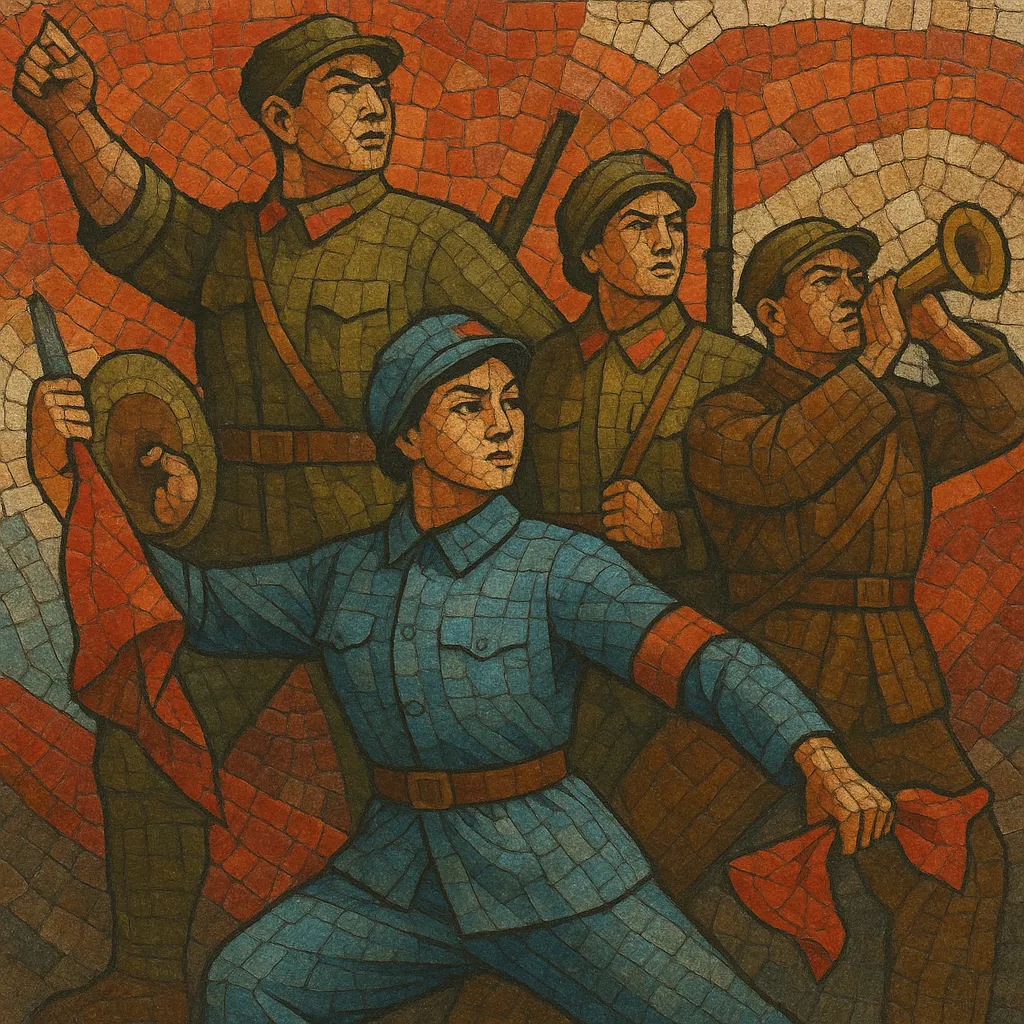Chinese revolutionary opera (yangbanxi, or "model operas") is a state-curated reform of traditional Chinese opera created during the Cultural Revolution. It replaces feudal and mythic stories with socialist-realist narratives featuring workers, peasants, and soldiers as heroic protagonists.
Musically, it blends Peking/Chinese opera vocal idioms and rhythmic patterns with Western symphonic orchestration, martial drum-and-snare patterns, massed choral writing, and recurring leitmotifs. Staging emphasizes realism, tableau-like heroic poses, and politicized color symbolism (notably red). The canon extended to model ballets and filmed operas, making it one of the most widely disseminated theatrical-music forms in modern Chinese history.
Chinese revolutionary opera emerged in the mid-to-late 1960s under the Cultural Revolution. Guided by Jiang Qing and cultural authorities, it sought to cleanse traditional opera of “feudal” content and align it with socialist ideology and Maoist aesthetics. The goal was to create model works (yangbanxi) that could be replicated nationwide.
The best-known works include The Red Lantern, Shajiabang, Taking Tiger Mountain by Strategy, On the Docks, and The Legend of the Red Lantern (filmed adaptations proliferated). Parallel “model ballets,” notably The Red Detachment of Women and the ballet version of The White-Haired Girl, helped establish a consistent musical-dramatic language across opera, ballet, and cinema.
Traditional banqiang vocal patterns and timbres were retained but reframed within a Western-style orchestra, with brass fanfares, snare-driven march rhythms, and choral blocks to signal collective heroism. Leitmotifs were used to identify classes, parties, and ideals. Stagecraft favored realistic sets, clear dramaturgy, and a codified heroic gestural vocabulary—often lit with bold color symbolism.
By the early 1970s, model works saturated theaters, film screens, and radio, shaping mass aesthetics. Following the end of the Cultural Revolution (1976), the model-operatic monopoly loosened. While many works receded, their musical materials and tropes continued to inform red song revivals, educational repertoires, and later pop/experimental recontextualizations. The period remains pivotal for understanding 20th-century Chinese musical theater and cultural policy.


